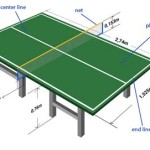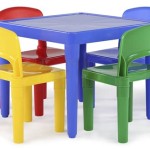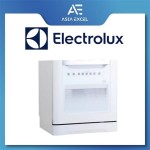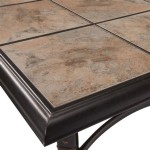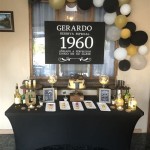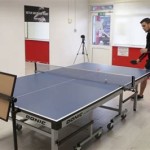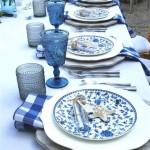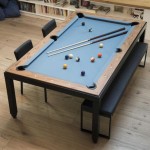```html
Wood Burning Outdoor Fire Pit Table: A Comprehensive Guide
The wood burning outdoor fire pit table represents a fusion of functionality and aesthetics, providing a focal point for outdoor gatherings while serving as a practical surface for dining and relaxation. This article delves into the various aspects of wood burning fire pit tables, including their design, materials, safety considerations, maintenance, and selection criteria.
Design and Functionality
Wood burning fire pit tables are typically constructed with a central fire bowl or pit surrounded by a table surface. The design aims to create a contained and controlled burning environment while offering a usable table area for drinks, food, or other items. These tables often feature a circular, square, or rectangular shape, with the fire pit located in the center or offset to one side. The table surface can be a solid, continuous piece or consist of individual slats or sections allowing for heat dissipation and airflow.
The primary function is to provide warmth and ambiance for outdoor spaces. The open flame creates a visually appealing element, enhancing the atmosphere of patios, decks, and gardens. The table surface adds a practical element, enabling users to conveniently place refreshments or enjoy a meal while gathered around the fire. The height of the table is typically designed for comfortable seating, facilitating conversation and interaction among guests.
Many designs also incorporate additional features such as storage areas for firewood, adjustable flame heights, and removable screens or covers for safety. Some models offer the option of converting the fire pit into a standard table when not in use, further enhancing their versatility.
Materials and Construction
The materials used in constructing a wood burning fire pit table significantly impact its durability, aesthetics, and heat resistance. Common materials include steel, copper, stone such as slate or granite, tile, and concrete. Each material offers distinct advantages and disadvantages in terms of cost, weight, maintenance, and appearance.
Steel is a popular choice due to its strength and affordability. Steel fire pit tables are often coated with a heat-resistant finish to prevent rusting and corrosion. Stainless steel offers enhanced durability and resistance to the elements, making it a suitable option for coastal or humid environments. Copper is prized for its natural beauty and heat conductivity. Copper fire pits develop a unique patina over time, adding to their character. Stone fire pit tables offer a natural and rustic look. Stone materials like slate or granite are highly heat-resistant and durable, able to withstand extreme temperatures. Tile can be used to create decorative patterns and designs on the table surface, adding a touch of personalization and style. Concrete fire pit tables are known for their contemporary and minimalist aesthetic. Concrete is a versatile material that can be molded into various shapes and textures.
The construction quality is crucial for the longevity and safety of the fire pit table. Sturdy welding, robust frame construction, and proper insulation are essential to prevent structural failure and minimize the risk of fire hazards. The thickness of the metal or stone used in the fire bowl affects its ability to withstand high temperatures without warping or cracking. A well-constructed fire pit table will provide years of reliable use with proper care and maintenance.
Safety Considerations
Operating a wood burning fire pit table requires careful attention to safety precautions to prevent burns, fires, and other accidents. Adhering to safety guidelines is crucial for protecting both users and the surrounding environment.
The fire pit table should be placed on a level, non-combustible surface, such as concrete, stone, or gravel. Avoid positioning the fire pit on wooden decks or near flammable materials like dry leaves, grass, or overhanging branches. Maintain a safe distance of at least 10 feet from any structures, fences, or trees. Always supervise the fire pit while it is in use. Never leave a burning fire unattended, and ensure that children and pets are kept at a safe distance. Use a fire screen or spark arrester to contain embers and prevent them from escaping the fire pit. Embers can travel long distances and ignite nearby materials. Keep a fire extinguisher, bucket of water, or garden hose nearby in case of emergencies. Be prepared to quickly extinguish the fire if it becomes uncontrolled or if embers escape the fire pit.
Burn only seasoned firewood in the fire pit. Avoid burning treated wood, painted wood, or other materials that can release harmful chemicals or produce excessive smoke. Stack the firewood loosely to allow for adequate airflow. Overloading the fire pit can create a dangerous situation and increase the risk of embers escaping. Use a poker or tongs to safely adjust the firewood and manage the fire. Avoid using flammable liquids, such as gasoline or kerosene, to start or accelerate the fire. Use kindling, such as small pieces of wood or paper, to ignite the fire. Allow the fire to burn down completely before leaving it unattended. Once the fire has cooled, dispose of the ashes properly. Ashes can remain hot for several days and pose a fire hazard if not handled correctly.
Maintenance and Care
Regular maintenance is essential for extending the lifespan and maintaining the appearance of a wood burning fire pit table. Proper cleaning and care will prevent rust, corrosion, and other forms of damage, ensuring that the fire pit remains a safe and enjoyable feature in the outdoor space.
After each use, clean the fire pit to remove ashes, debris, and unburned wood. Use a shovel or brush to scoop out the ashes and dispose of them in a metal container with a tight-fitting lid. Do not dispose of hot ashes in plastic containers or near flammable materials. Regularly inspect the fire pit for signs of rust, corrosion, or damage. Address any issues promptly to prevent further deterioration. Clean the table surface with a mild soap and water solution. Avoid using abrasive cleaners or harsh chemicals, as these can damage the finish. Protect the fire pit from the elements when not in use. Use a cover or store the fire pit in a sheltered location to prevent rain, snow, and sun damage.
For steel fire pit tables, apply a heat-resistant paint or sealant to prevent rust. Touch up any areas where the paint has chipped or worn away. For copper fire pit tables, polish the copper periodically to maintain its shine. Alternatively, allow the copper to develop a natural patina, which will add to its character. For stone or tile fire pit tables, seal the stone or grout lines to prevent staining and water damage. Reapply the sealant every few years as needed. For concrete fire pit tables, apply a concrete sealant to protect the surface from moisture and stains. Reapply the sealant every year or two as needed. Regularly inspect the gas lines and connections (if applicable) for leaks or damage. If any issues are detected, contact a qualified technician for repairs.
Choosing the Right Wood Burning Fire Pit Table
Selecting the appropriate wood burning fire pit table involves considering several factors, including size, design, materials, budget, and intended use. Evaluating these aspects will help ensure that the chosen fire pit table meets specific needs and preferences.
Determine the appropriate size of the fire pit table based on the size of the outdoor space and the number of people who will typically gather around it. A larger fire pit table may be suitable for spacious patios, while a smaller model may be more appropriate for smaller decks or balconies. Consider the desired design and style of the fire pit table. Choose a design that complements the existing outdoor décor and reflects personal preferences. Options range from rustic and traditional designs to modern and contemporary styles. Evaluate the materials used in the construction of the fire pit table. Consider factors such as durability, heat resistance, aesthetics, and maintenance requirements. Choose materials that are appropriate for the climate and environment in which the fire pit will be used.
Establish a budget for the fire pit table. Prices can vary significantly depending on the size, materials, and features. Research different brands and models to find a fire pit table that offers the best value for the money. Consider the intended use of the fire pit table. If it will primarily be used for dining, choose a model with a spacious table surface. If it will primarily be used for ambiance and warmth, choose a model with a larger fire bowl. Read customer reviews and ratings before making a purchase. This will provide valuable insights into the quality, performance, and reliability of the fire pit table. Ensure that the fire pit table meets all applicable safety standards and regulations. Look for models that are certified by recognized organizations such as UL or CSA.
```
Fire Pits For Outside 32 Wood Burning Pit Tables With Screen Lid Bbq Net Ice Tray Food Clip And Cover Backyard Patio Garden Outdoor Black

Wood Burning Fire Pit Table 32 Outdoor W Screen Multifunctional Grill Ice Tray

Outdoor Wood Burning Circular Fire Pit Giro 135

32 Wood Burning Fire Pit Outdoor Square Metal Table Backyard Patio Garden Heater Bbq Ice With Charcoal Rack Fit For Party Picnic Camping Com

32 Wood Burning Fire Pit Table Outdoor Fireplace Square Metal Firepit 360 Mesh Screen Lid Deep Bowl Com

Fire Pit Set Wood Burning Includes Screen Cover And Log Great For Outdoor Patio 32 Inch Marble Tile Square Firepit By Pure Garden Com

Outdoor Garden Wood Burning Fire Pit Table Bbq Grill Diy At B Q

Seizeen 32 Inch Fire Pit Table Wood Burning Backyard Patio Garden Metal Outdoor Fireplaces For Heating Com

Clihome 35 5 In Black Metal Patio Outdoor Wood Burning Fire Pit Table Multifunctional Dining With Cooking Bbq Grate Cl 70941 The Home Depot

Costway 32 3 In 1 Outdoor Square Fire Pit Table With Bbq Grill And Ra Us Fireplace
Related Posts

